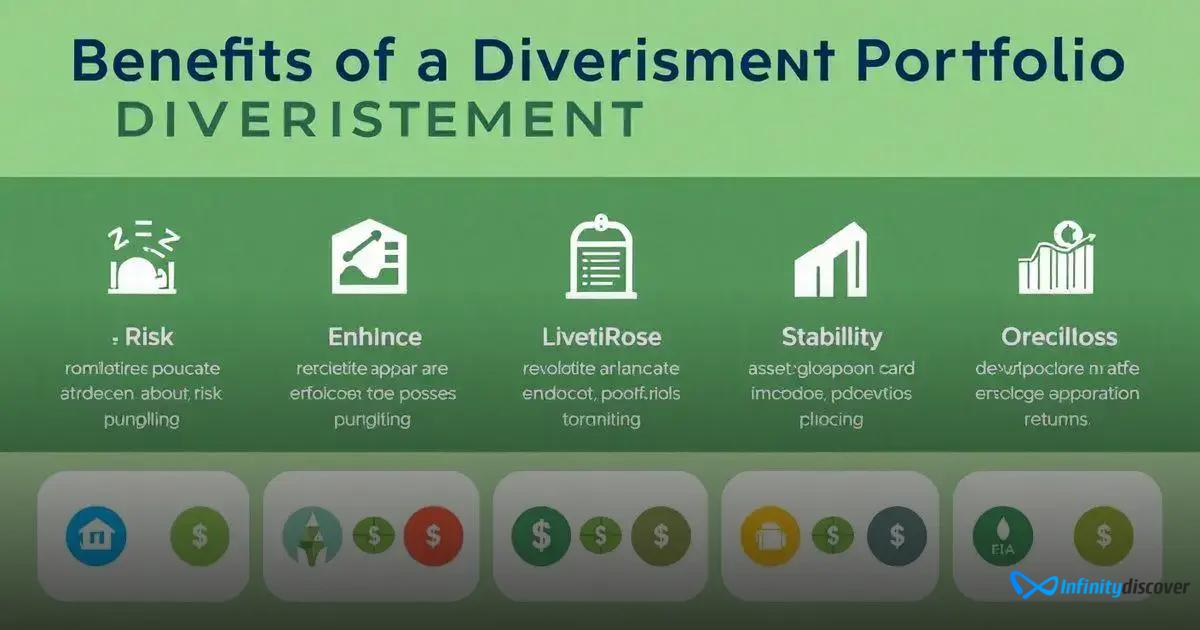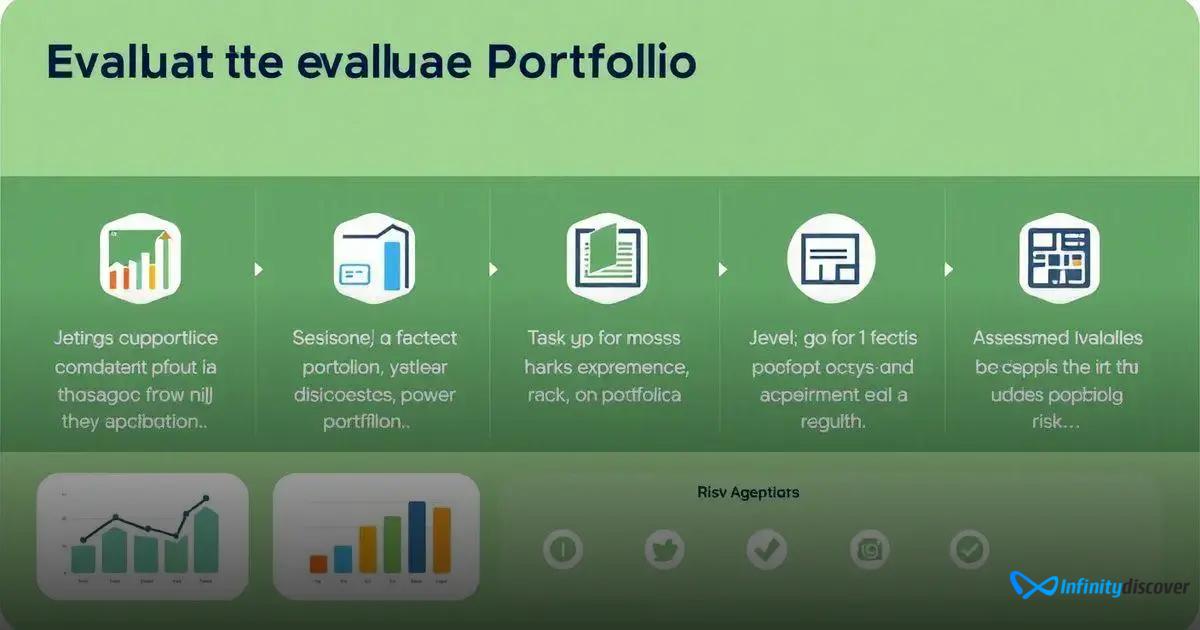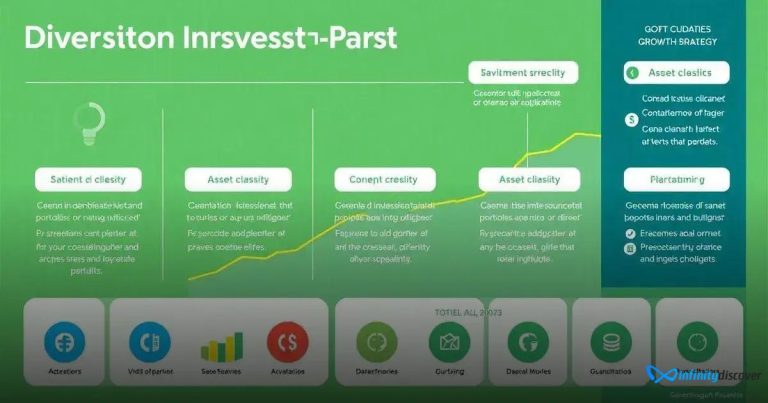A diversified investment portfolio is the cornerstone of financial stability and growth. By allocating investments across different asset classes such as stocks, bonds, real estate, and mutual funds, investors can effectively manage risk while aiming for optimal returns.
Diversification reduces the impact of market fluctuations on your overall portfolio, ensuring that a downturn in one area doesn’t significantly affect your entire investment. Additionally, integrating future-focused trends like technology and ESG (Environmental, Social, and Governance) factors can enhance long-term potential.
Regularly reviewing and adjusting your portfolio is essential to align with changing market conditions and personal financial goals. Explore the power of a diversified investment portfolio to secure a balanced and resilient financial future!
Understanding a Diversified Investment Portfolio
A diversified investment portfolio is an investment strategy that involves spreading your investments across various asset classes. This includes stocks, bonds, real estate, and other financial instruments. The goal is to reduce risk and improve potential returns. When you diversify, even if one investment underperforms, others may perform well, helping to balance your overall investment performance.
Why Diversification Matters
Diversification is essential because it lowers the overall risk in your investment portfolio. By placing your money in different types of investments, you can protect yourself from significant losses. It’s akin to the saying, “Don’t put all your eggs in one basket.” If one basket falls, you still have others intact.
Types of Investments in a Diversified Portfolio
Your diversified investment portfolio may include:
- Stocks: Equity investments in companies.
- Bonds: Fixed income investments where you lend money to governments or corporations.
- Real Estate: Properties that can provide rental income and capital appreciation.
- Commodities: Physical assets like gold, silver, or oil.
- Mutual Funds and ETFs: Pooled investment funds that provide diversification within one investment.
How Diversification Works
When market conditions change, different investments react differently. During an economic downturn, stocks might decline, while bonds and gold may hold their value or even increase. By having a mix of assets, you can benefit from the strengths of each class.
Regular Assessment
Regularly reviewing your diversified investment portfolio is crucial. This allows you to adjust your assets based on performance and market conditions. As you approach retirement or reach different life stages, your investment strategy should evolve as well.
Benefits of a Diversified Investment Portfolio

A diversified investment portfolio offers numerous benefits that can greatly enhance your financial strategy. Here are the key advantages:
1. Reduced Risk
One of the main benefits of diversification is that it helps lower risk. When you invest in different asset classes, the poor performance of one area may be balanced out by the stability or growth of another. This can help protect your overall investment.
2. Enhanced Returns
Diversification can lead to better returns over time. By investing in a mix of assets, you increase your chances of capturing higher growth in various sectors. This can provide a more stable and potentially increasing return on your investment.
3. Improved Stability
A diversified portfolio is typically less volatile than one concentrated in a single investment. This stability can lead to more peace of mind, especially during market fluctuations.
4. Access to More Opportunities
By diversifying, you open yourself up to a wider range of investment opportunities. This means you can take advantage of growth in different sectors and geographic areas, enhancing your investment potential.
5. Inflation Protection
Diversifying your portfolio can also serve as a hedge against inflation. Certain assets, like real estate and commodities, tend to perform better during inflationary periods, helping to preserve your purchasing power.
6. Flexibility in Asset Allocation
Your diversified investment portfolio allows for more flexibility in how you allocate your resources. As market conditions change, you can adjust your investments according to new opportunities or risks.
7. Potential for Passive Income
Many diversifiable investments, like real estate and dividend-paying stocks, can provide a steady stream of passive income. This can be especially beneficial for long-term financial goals.
8. Psychological Benefits
Finally, knowing that your investments are spread across various asset types can reduce anxiety. This psychological benefit may lead to better decision-making and a more effective investment strategy.
How to Build a Diversified Investment Portfolio
Building a diversified investment portfolio is a vital step in achieving financial security. Here are steps to help you create one:
1. Define Your Investment Goals
Start by identifying your financial goals. Consider factors like your time horizon, risk tolerance, and investment objectives. Having clear goals will guide your decisions on how to diversify.
2. Assess Your Risk Tolerance
Understanding your risk tolerance is crucial. Are you comfortable with high-risk investments for potentially higher returns, or do you prefer less risky options? Knowing this will help you choose the right mix of assets.
3. Choose Asset Classes
Select a variety of asset classes to include in your portfolio. Common categories include:
- Stocks: Long-term growth potential but can be volatile.
- Bonds: Generally safer; they provide steady income.
- Real Estate: Offers potential for income and appreciation.
- Commodities: Such as gold and oil, which can be good for inflation protection.
- Cash or equivalents: Useful for liquidity and emergencies.
4. Diversify Within Asset Classes
Within each asset class, diversify further. For stocks, consider a mix of domestic and international equities. For bonds, invest in different maturities and types, such as government and corporate bonds.
5. Build a Balanced Portfolio
Allocate your assets based on your goals and risk tolerance. A general guideline might be to use the rule of 100 (subtract your age from 100 to determine the percentage of stocks in your portfolio). Adjust as needed based on your circumstances.
6. Regularly Rebalance Your Portfolio
Over time, some investments will grow faster than others. Regularly rebalance your portfolio to maintain your desired asset allocation. This can be done annually or semi-annually.
7. Stay Informed
Keep up to date with market trends and changes in the economy. This knowledge can help you make informed decisions about adjustments to your diversified investment portfolio.
8. Consult a Financial Advisor
If you are unsure about how to build your portfolio, consider consulting a financial advisor. They can guide you based on your specific financial situation.
Evaluating the Performance of Your Portfolio

Evaluating the performance of your investment portfolio is an essential part of maintaining a diversified investment portfolio. This process helps you understand how well your investments are doing and whether adjustments are needed. Here are key steps to effectively evaluate your portfolio’s performance:
1. Set Clear Performance Benchmarks
Establish clear benchmarks to compare your portfolio’s performance. Benchmarks could include market indices relevant to the assets you hold, such as the S&P 500 for stocks or the Bloomberg Barclays Bond Index for bonds.
2. Review Returns Over Time
Track your returns on a regular basis, typically annually or quarterly. Calculate your total return as a percentage, considering both capital gains and dividends received. This gives you a clear picture of your portfolio’s growth.
3. Adjust for Risk
When evaluating performance, consider the level of risk taken to achieve returns. Use metrics such as the Sharpe ratio, which measures risk-adjusted return, helping you understand if you are compensated for the risk you’ve taken.
4. Evaluate Diversification Effectiveness
Assess how effectively your diversification strategy is working. Check if your portfolio is too heavily weighted in one asset class or sector. A well-diversified portfolio should balance risks across various asset classes.
5. Monitor Fees and Expenses
Track the costs associated with managing your portfolio. High fees can significantly affect your returns over time, eating into your profits. Make sure that the performance of your portfolio justifies any fees incurred.
6. Stay Informed About Market Trends
Keep an eye on market trends and economic indicators that may affect your portfolio. Changes in interest rates, inflation, and global events can all impact asset performance.
7. Reassess Your Investment Goals
Regularly reassess your investment goals and risk tolerance. Life changes such as retirement or significant expenses may require adjustments to your investment strategy and asset allocation.
8. Consult Professionals for Insight
If you are uncertain about evaluating your portfolio, consider consulting a financial advisor. Advisors can provide tools and expertise to help you assess your investments effectively.
Embracing a Diversified Investment Portfolio
Building and maintaining a diversified investment portfolio is essential for achieving financial freedom and stability. By effectively understanding the principles of diversification, assessing risks, and regularly evaluating performance, investors can optimise their strategies to navigate the complexities of the financial market.
Implementing advanced technologies, prioritising ESG factors, and exploring alternative investments are vital trends that can enhance your portfolio in the future. It is crucial to remain informed and adaptable to changes in investment landscapes and regulations.
By embracing these strategies, you can unlock the full potential of your investments, mitigate risks, and ultimately work towards a secure financial future.
Remember, the journey of investing is a long-term commitment that requires patience, discipline, and continual learning.





